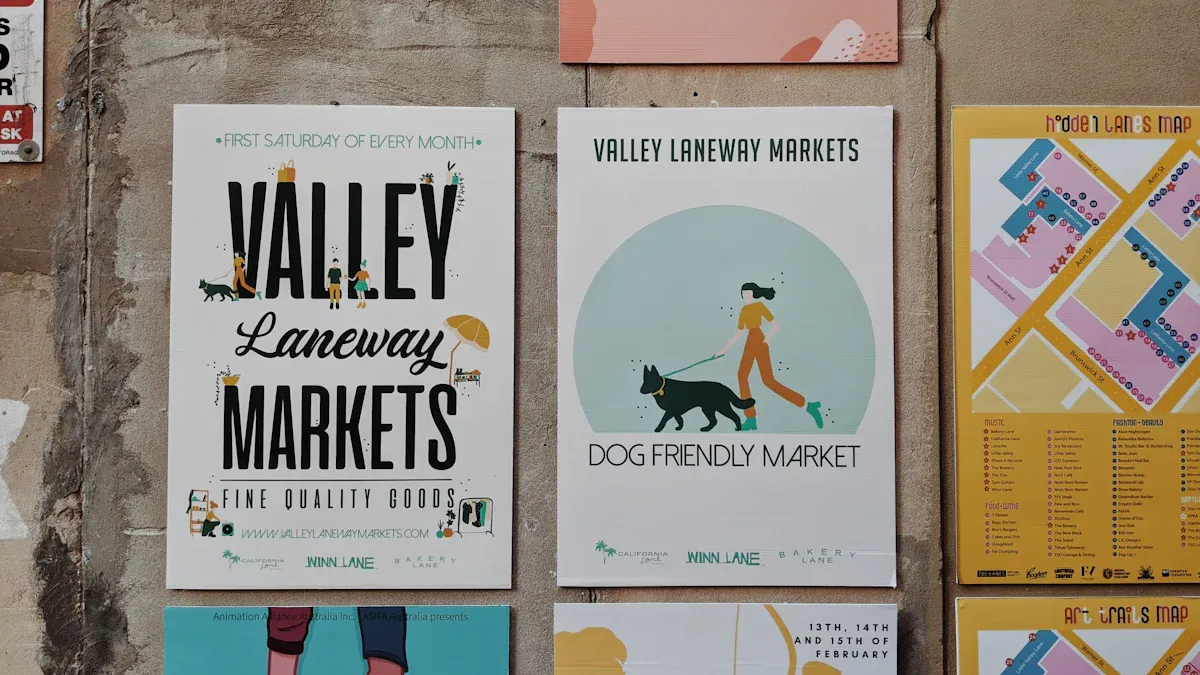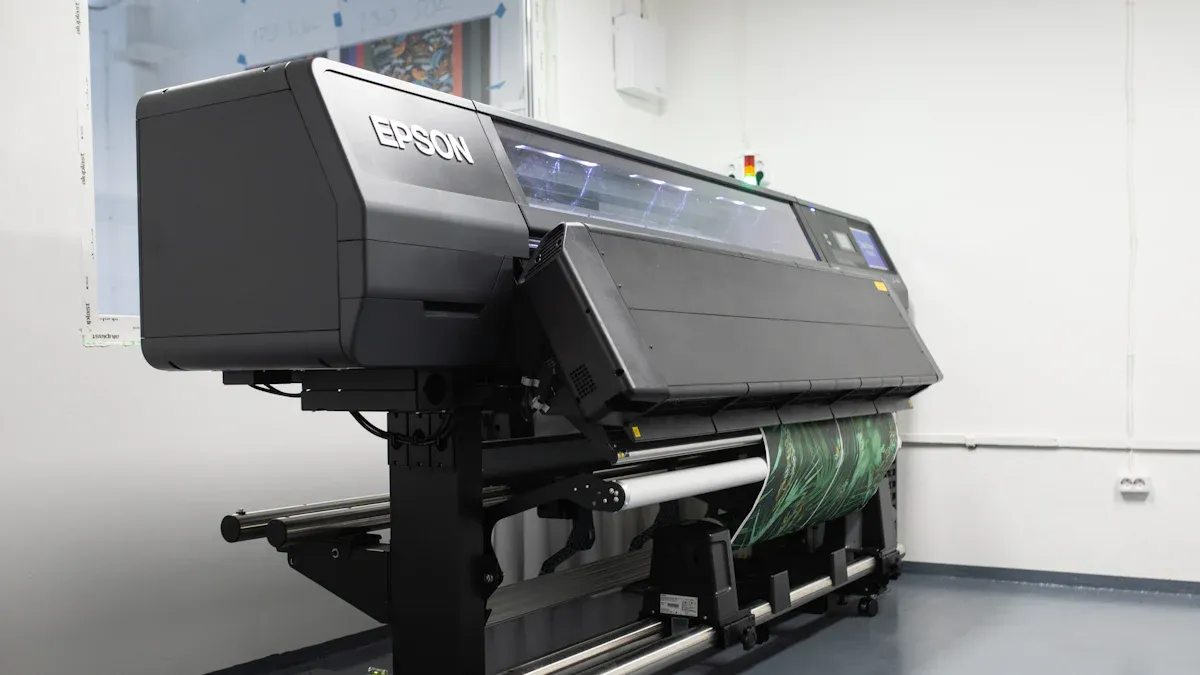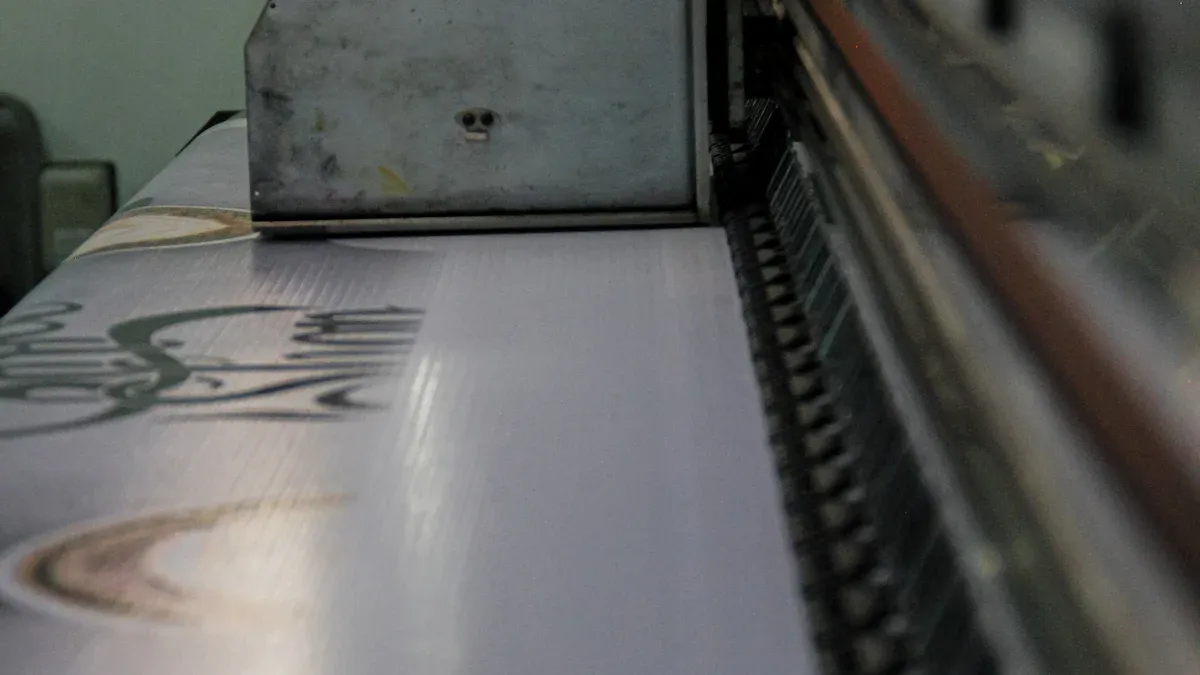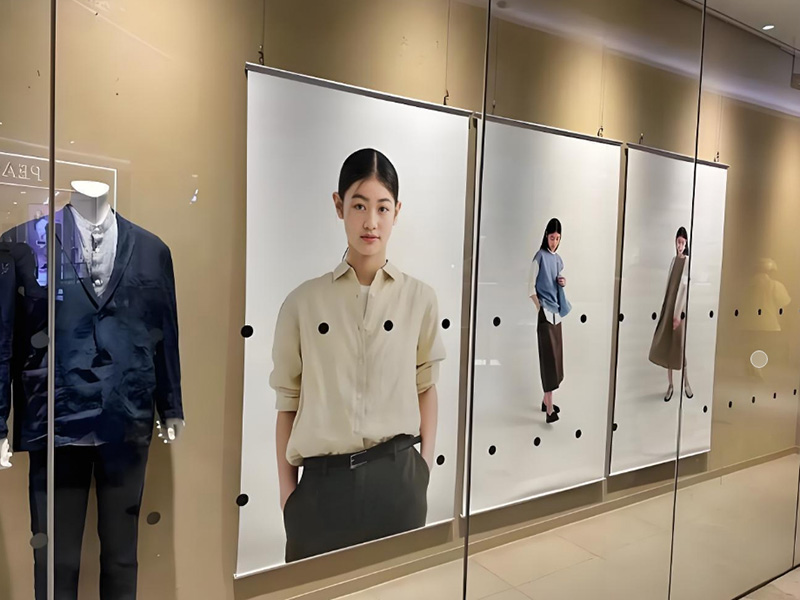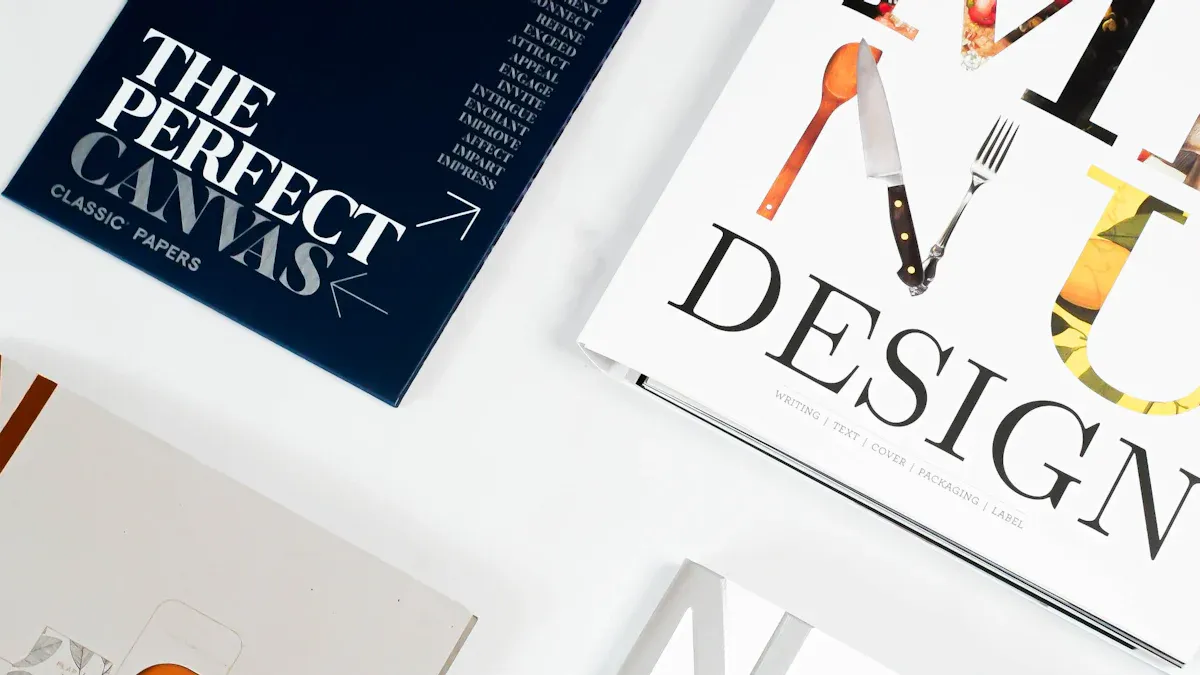
A 24×36 poster is a common size for big prints. It measures 24 inches wide and 36 inches tall. In centimeters, that’s 61 cm by 91 cm. Its 2:3 ratio works for vertical or horizontal designs. This size is popular because it catches attention easily. Whether for events or art, a 24×36 poster stands out. It looks great in busy places and shows clear visuals.
Key Takeaways
A 24×36 poster is 24 inches wide and 36 inches tall. It’s great for bold and noticeable designs.
Use 300 DPI or higher for clear and sharp prints. This helps the poster look good, even up close.
This poster size is flexible. It’s perfect for ads, home decoration, or office displays.
Common sizes like 24×36 make framing and showing easy. You can find frames for this size easily.
Use CMYK color mode when designing for printing. This keeps colors looking the same on paper as on screen.
Breaking Down the 24×36 Poster Size
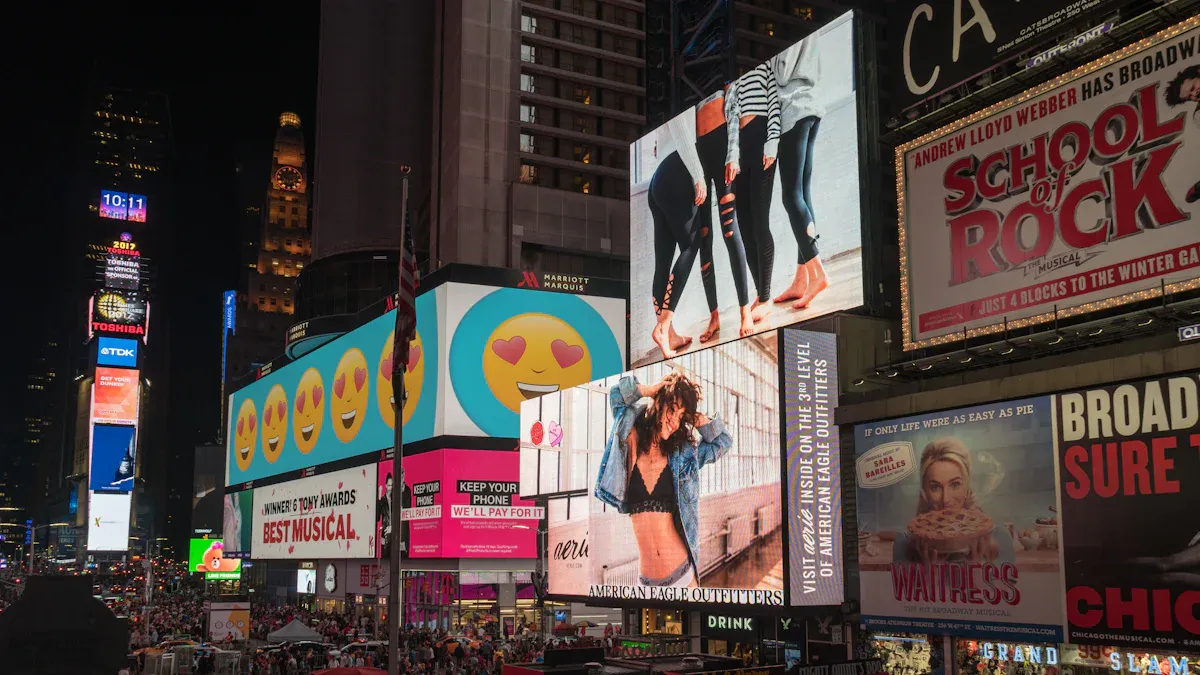
Dimensions in Inches and Centimeters
A 24×36 poster is easy to understand in size. It’s 24 inches wide and 36 inches tall. In centimeters, that’s 61 cm by 91 cm. This big size grabs attention in any space. Its 2:3 ratio keeps designs balanced. You can use it vertically or horizontally. It’s great for showing clear images or bold words from far away.
Pixel Conversions for 24×36 Poster Size
When designing a 24×36 poster, pixel size matters. Pixels depend on resolution, measured in pixels per inch (PPI). For example:
Viewing Distance | PPI for Sharp Vision (20/10) | |
|---|---|---|
Arm’s Length | 123 | 246 |
40 Degrees Away | 70 | N/A |
Billboard (200 ft) | 20 | N/A |
For sharp prints, aim for 300 PPI. At 300 PPI, your file should be 7200 x 10800 pixels. At 150 PPI, it would be 3600 x 5400 pixels. Match resolution to how far people will view it. Posters seen up close need more detail than those far away.
Resolution Requirements for Printing (DPI)
Printing quality depends on resolution, measured in dots per inch (DPI). Follow these tips:
Use at least 300 DPI for the best results.
For large posters viewed far away, 150 DPI works fine.
Higher DPI makes posters look sharp, even up close. If unsure, ask your printer for advice. This ensures your 24×36 poster looks great, whether in a store or gallery.
Why 24×36 Posters Are Popular
Great for Ads and Promotions
A 24×36 poster is great for ads and promotions. Its big size helps your message stand out in busy places. These include malls, bus stops, or event spaces. Bold pictures and words grab attention fast. Research shows visuals are 43% more convincing than just text. This makes posters a strong way to influence choices and actions.
Evidence Type | Description |
|---|---|
Persuasiveness | Visual content, like posters, is 43% more convincing than text. |
Using this poster size helps you connect with your audience. You can promote sales, events, or new products easily. A 24×36 poster ensures your message gets noticed.
Perfect for Home and Office Decoration
A 24×36 poster works well for home or office decoration. Its size is great for showing art, photos, or inspiring quotes. In a living room, it can be the main focus of the space. In an office, it can boost creativity or show off branding. The size is big enough to stand out but not too large to overpower the room.
People love this size because it’s flexible. You can hang it on a wall or lean it against furniture. You can also place it on an easel for a casual look. Whether you like modern art, vintage posters, or custom designs, this size fits many styles.
Easy to Frame and Display
The 24×36 poster is a standard size for frames and stands. This makes it easy to use for personal or business needs. Frames and stands in this size are easy to find. Businesses use them for trade shows, exhibits, or ads.
Size (inches) | Size (mm) | Common Uses |
|---|---|---|
609.6 x 914.4 | Ads, trade shows, exhibits |
Choosing this size makes displaying your poster simple. Frames protect your design and make it look neat. Stands help set up posters at events or stores. This ease of use adds to the popularity of 24×36 posters.
Print-Ready Design Guidelines for 24×36 Posters
Recommended Image Resolution and File Formats
To print a 24×36 poster, use the right resolution and file type. Big posters need clear visuals, especially when seen up close. Follow these simple rules:
Resolution: Set the resolution to at least 350 DPI. This keeps your poster sharp and professional at full size.
File Formats: Save your design as PDF, TIFF, or EPS. These formats keep the image quality high and work well with printers. Avoid using JPEG because it can lower the quality.
Tip: Ask your printer about their preferred file format. Some printers may need specific settings for the best results.
Using these steps will help your poster look bright and detailed.
CMYK Color Profile and Bleed Zone Specifications
Printed colors are different from screen colors. Screens use RGB, but printers use CMYK for accurate colors. Follow these tips to make sure your 24×36 poster prints correctly:
CMYK Color Profile: Design your poster in CMYK mode. This is the standard for printing. Files in RGB will be changed to CMYK, which might alter colors.
Bleed Zone: Add a bleed zone of 1/8 inch (0.125″) around your design. This prevents white edges if the poster is trimmed unevenly. Extend background colors and images past the trim line for a clean look.
Note: Many design tools have templates with bleed and color settings. Using these can save time and avoid mistakes.
These steps will help your poster print without errors and look polished.
Tips for Creating Eye-Catching Designs
A good 24×36 poster grabs attention and leaves a strong impression. Use these tips to make your design stand out:
Use Bold Visuals: Pick clear and exciting images that look good from far away.
Prioritize Readability: Use big, easy-to-read fonts for headlines. Keep text short and avoid clutter.
Leverage Contrast: Mix light and dark colors to make details stand out.
Incorporate Branding: Add your logo, brand colors, and matching fonts to show your identity.
Test Your Design: Print a smaller version first to check for mistakes. Fix any issues before printing the full-size poster.
Design Element | Why It Matters |
|---|---|
Bold Visuals | Draws attention at events like exhibits or conventions. |
Readable Fonts | Makes your message clear and easy to read. |
Contrast | Highlights important details and improves visibility. |
Pro Tip: Think about where your poster will be displayed. Busy places need bright colors and big fonts, while quiet areas may need softer designs.
By following these ideas, you can create a 24×36 poster that looks great and shares your message effectively.
Case Study: How Businesses Use 24×36 Posters Effectively
Retail Campaigns with Uniform Poster Sizes
Stores often use 24×36 posters to share clear messages. This size works well in busy places like malls or bus stops. Big pictures and short text make promotions easy to notice. Posters are affordable, helping businesses reach many people without spending too much.
Using the same poster size helps marketing stay organized. It makes designing and printing simpler. It also keeps logos, colors, and fonts the same, which builds brand recognition. Customers remember the consistent look across different campaigns.
Benefit | Why It Helps |
|---|---|
Better visibility | Large posters with bold designs stand out in crowded areas. |
Saves money | |
Builds brand identity | Using the same logos and colors makes your brand memorable. |
Targets audiences | Placing posters in key spots helps reach specific groups. |
Creates impact | Physical posters leave a stronger impression than online ads. |
Using 24×36 posters wisely can help businesses connect with more people.
Advantages of Standardized Poster Sizes for Multiple Locations
Standard poster sizes make things easier for businesses with many stores. Using the same size keeps branding and messages consistent everywhere. Customers visiting different stores will quickly recognize your ads. This builds trust and loyalty over time.
Standard sizes also save money. Ordering posters in bulk lowers printing and shipping costs. It removes the need for custom designs for each store, making the process faster. Employees can set up posters easily since frames and stands for 24×36 posters are common.
Uniform poster sizes improve teamwork. Designers, marketers, and store managers can plan campaigns better. Everyone knows the exact size, making it simple to work together and avoid mistakes.
By using standard sizes, businesses create a smooth experience for customers and improve operations.
A 24×36 poster is 24 inches wide and 36 inches tall. It’s great for big designs that need to look clear. Use at least 150 DPI for sharp images. This means your file should be 3600 x 5400 pixels. Even when seen from far away, the quality stays good.
This poster size is very flexible. You can use it for ads, home decorations, or work displays. Its common size makes framing and showing it easy. Try using this format for eye-catching ads or creative art that grabs attention.
FAQ
What is the best resolution for a 24×36 poster?
Use 300 DPI for sharp prints. This ensures your design looks clear and professional. If your poster will be viewed from a distance, 150 DPI works well. Always check with your printer for specific requirements.
Can I use RGB colors for printing my poster?
No, RGB colors are for screens. Use CMYK for printing. This ensures accurate color reproduction. Files in RGB may print differently than expected. Always design your poster in CMYK mode to avoid surprises.
What file format should I use for my poster design?
Save your design as PDF, TIFF, or EPS. These formats preserve image quality and work well with printers. Avoid JPEG, as it can reduce clarity. Ask your printer for their preferred format to ensure compatibility.
How do I add a bleed zone to my poster design?
Extend your design 1/8 inch (0.125″) beyond the trim line. This prevents white edges after cutting. Most design tools include bleed settings. Use these to simplify the process and ensure a clean finish.
Is a 24×36 poster suitable for outdoor use?
Yes, but choose durable materials like vinyl or laminated paper. These resist weather damage. Use UV-resistant inks to prevent fading. For long-term outdoor use, consult your printer about waterproof options.




